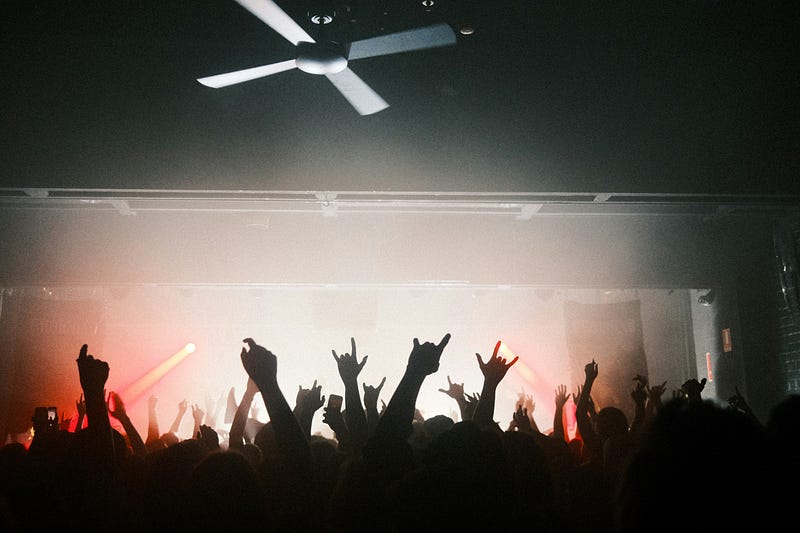
AI-generated photo from Pixabay
You can also view this article at https://medium.com/non-monetized-together/the-first-musician-to-make-future-funk-music-8c59f5fe8df2.
What was the first example of future funk music? Some people say the Louis LaRoche track “Peach” (2008) or The Phantom Revenge track “Absolute Ego Riot” (2008), but I don’t think either track is fully future funk, even if they are precursors of the style. Other cited examples include Keats Collective, Saint Pepsi, the song “Close to Me” (2010) by Teams & Star Slinger, and even the song “Arabest” (2011) by SebastiAn, but I have a contender that predates all of these examples, and that I haven’t seen anybody mention before.
My suggestion is Go Go Bizkitt’s 2010 EP The Bizkitt, which is just two songs and a remix. The two songs are Miami Nights and Get Up, and the remix is a redone version of Miami Nights.
When determining the answer to the question “who was the first future funk musician,” what you really need to be asking is “when did filter house evolve into future funk?” You can find music that sounds close to future funk as far back as the mid-90s if you look at the genre “filter house,” also inconveniently known as “French house.” Future funk grew out of filter house in the early 2010s. Both genres are funky, energetic, and prominently sample tracks from the 70s and 80s.
But what are the differences between filter house and future funk? I have trouble answering this question, and even if I use the Internet to help me, there are not very many sources online that can help me. Thalia Harris of YumeTwins tries distinguishing the two styles of music in her article “Future Funk: A Guide to This Retro Aesthetic.”
“[Filter house] tends to have more ambient build-up and repetition, with short loops and repetitive structures at 120–128 bpm and longer track durations. On the other hand, future funk is more melody-driven, sample-heavy, and influenced by the psychedelic elements of vaporwave. It features tracks typically under three minutes long and at 100–110 bpm.” — Thalia Harris/YumeTwins
Harris’s claim that future funk is more sample-heavy is not true. As a filter house fan myself, I can tell you that almost all tracks in the genre are based off samples. Other than that, Harris seems to have a good grasp on the differences between the two genres.
Aside from this, the only other sources I can find that differentiate the two genres would be a bunch of Reddit discussion threads. They mostly echo the points Thalia has already made, though some users have added other points of diversion, like the drums in future funk being louder, or future funk being more maximalist.
Some other people say that filter house and future funk are too similar to each other to be different genres. To be honest, I can’t say I disagree with this take. I’m surprised that people thought future funk was different enough from filter house that it had to be its own thing. Despite this, no one person can control how new music genres are defined and categorized. Once enough people recognize a genre as its own thing, the genre name is out there in the world, and you can’t change it back.
So based off the minor differences future funk has from filter house, when was the moment that filter house first transitioned to future funk? There are two tracks from 2008 that have been brought up as candidates — “Peach” by Louis La Roche and “Absolute Ego Riot” by The Phantom’s Revenge.
Peach —
Absolute Ego Riot —
Feel free to disagree, but I don’t think either of these tracks classify as future funk due to their lack of melody. The two tracks on the Go Go Bizkitt EP have some melodic parts, so I think they’re more like future funk than the two tracks from 2008.
I would also say “The Bizkitt” matches the other criteria for future funk. It’s psychedelic, the drums are loud, and it’s maximalist. “Get Up” uses samples from the 1981 Gwenn McRae song “Funky Sensation.” Both original tracks use more variation than most filter house tracks, and are structured more like a pop song. You could argue that the speed and tempo of these songs are closer to filter house than future funk, but I don’t think that makes these tracks not future funk. Here’s the Apple Music link to the EP. I can’t pull up a YouTube link to the songs on the EP, because they aren’t publicly available on YouTube.

AI-generated photo from Pixabay
“The Bizkitt” was released on April 21, 2010. This predates other contenders, such as the label Keats Collective or the musician Saint Pepsi, both who began creating music in 2012. SebastiAn’s one-off foray into future funk, “Arabest,” was released in 2011. Even the earliest future funk release in RateYourMusic’s database — “Close to Me” by Teams vs Star Slinger — was only released in June 2010.
Another reason that Go Go Bizkitt, whose real name is Tom Nelson, could lay claim to being “the father of future funk” is that he actually intended to create a new genre. Except he didn’t call it future funk, he called it “stutter funk,” as you can see in the Bandcamp description for his second EP StutterFunk. This EP may be the second-earliest future-funk release, having been released on May 4, 2010, still earlier than any future funk track I can find from any other artist.
Go Go Bizkitt’s pioneering tracks still hold up today. They are fun and energetic, with sound design that pops and sparkles. Nonetheless, Nelson no longer makes future funk under the name Go Go Bizkitt, which is understandable because that style of music doesn’t seem as popular as it used to be. Now, he makes 80s-style synthpop under the name Luxxly.
Even though Luxxly’s music sounds nothing like future funk, Luxxly’s aesthetics are more future funk-like than Go Go Bizkitt’s aesthetics have ever been. Luxxly music videos use a lot of nostalgic and consumerist footage from the 80s and 90s, and there’s lots of anime in his SoundCloud artwork. I enjoy some Luxxly’s songs, but I prefer Go Go Bizkitt. I feel like Nelson had more ideas as a future funk artist than a synthpop artist.
We may be nearing the end of this blog post, but the story is not over yet. I always want Nonmonetized Together to be an interactive community, so not only will I challenge you to find an earlier future funk release, but I’ve found a good starting point you can use. This blog post from 2011 has described Go Go Bizkitt as being part of a new era of disco producers, which includes U-Tern, Starsmith, Ghost of Venice, and Geisha Twins.
Despite being a follower of nu-disco music, I have never heard of any of these musicians. Perhaps one of them has a future funk release dated earlier than “The Bizkitt.” I’ll leave this as a project for my readers to explore.
Here are two links that explain to you what Nonmonetized Together is:
https://write.as/non-monetized-together/about-our-blog-tired-of-internet-drama-and-fakeness
https://write.as/non-monetized-together/why-i-added-svalien-to-the-nonmonetized-together-title
Discuss...
#Music #MusicHistory #FutureFunk #Vaporwave #DanceMusic



